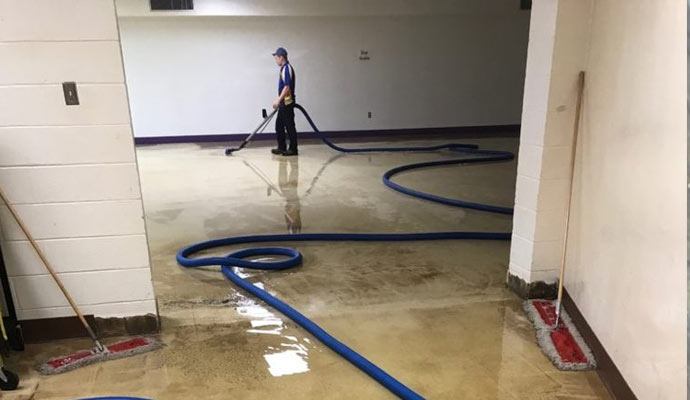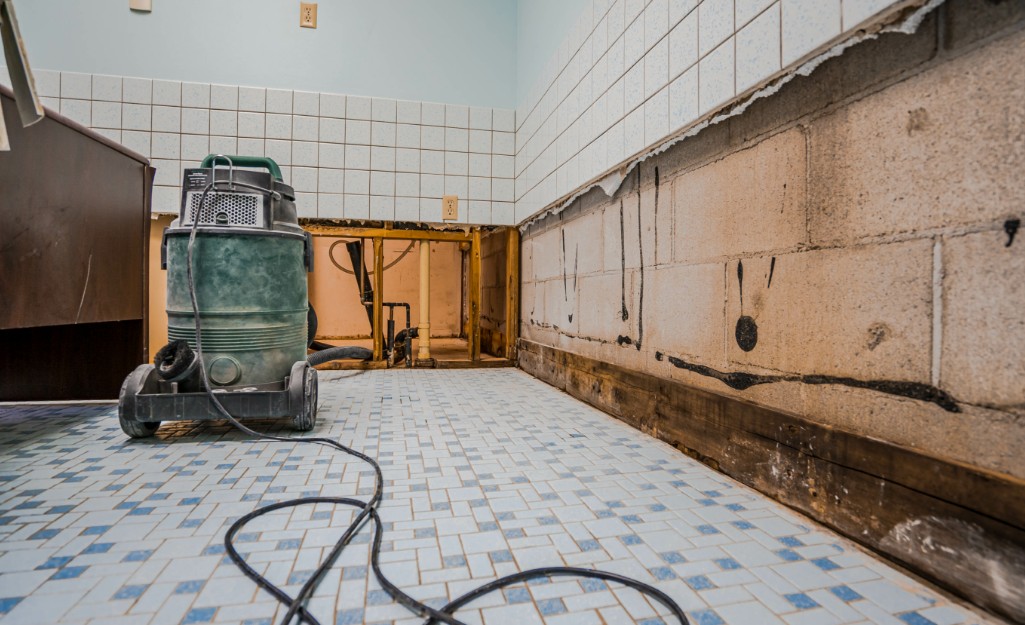Leading Tips for Effective Water Damage Restoration: Protect Your Residential Property Today
Water damage can strike suddenly, causing substantial interruption and potential dangers. Effective restoration needs a systematic technique to minimize further injury. From examining the damage to carrying out safety nets, each action plays an important function in safeguarding home. Recognizing these methods can make all the difference in the results of a water-related situation. What necessary activities should be prioritized to ensure extensive protection?
Analyze the Damage Quickly

Shut Off the Water
Shutting down the water is a vital action in protecting against more damage throughout a water-related incident. When a leakage or flood occurs, immediate action is important to reduce the degree of the damage. Finding the primary water shut-off shutoff must be a concern. This valve is frequently located near the water meter or where the water line enters the building. Once situated, turning the shutoff clockwise will certainly stop the flow of water. In cases where the main valve is inaccessible, specific shut-off shutoffs for home appliances may additionally be utilized. Promptly turning off the supply of water not only protects the property from extra harm however additionally assists in the subsequent restoration process, ensuring that recovery efforts can start right away.
Get Rid Of Excess Water Quickly
Removing excess water immediately is essential for lessening damage and preventing mold growth in influenced locations. The longer water stays in call with products such as wood, insulation, and drywall, the greater the danger of structural damage and the development of mold and mildew. Home owners should act promptly to examine the situation and use suitable tools, such as damp vacuum cleaners or pumps, to remove standing water successfully. If the quantity of water is considerable, speaking to professional restoration services may be needed, as they can give customized devices and knowledge. Furthermore, getting rid of furnishings and valuables from the damaged area can assist to decrease damage and promote the overall restoration procedure. Prompt activity not just shields property yet also help in a smoother recovery trip.
Dry the Affected Area
After eliminating excess water, it is vital to dry the damaged location extensively. This involves getting rid of any type of standing water and improving air flow to help with evaporation. Effective drying will certainly assist avoid mold and mildew development and additional damage.
Eliminate Standing Water
Swiftly addressing standing water is crucial for reliable water damage restoration. The presence of stationary water can bring about further property damage and produce an environment conducive to mold and mildew development. To minimize these risks, it is important to remove standing water as promptly as possible (Water Damage Restoration). This procedure usually entails utilizing completely submersible pumps, wet vacuums, or specialized extraction tools. Specialists advise reviewing the deepness and extent of the water prior to picking the proper technique for removal. Safety and security preventative measures ought to additionally be taken, including putting on protective equipment and making sure electrical energy is turned off in impacted areas. When the standing water is efficiently gotten rid of, the drying out process can start, even more guarding the building from continuous damage
Rise Air Blood Circulation

Examine for Mold Growth
Mold growth is a severe concern following water damage, as it can result in health and wellness problems and structural wear and tear. After any type of flooding or leaks, his comment is here it is necessary to carry out a complete examination of the influenced locations. This consists of checking surprise rooms such as behind wall surfaces, under carpetings, and in attic rooms or basements where moisture might linger. Indicators of mold and mildew include a musty smell, staining on surfaces, or visible growth. Building proprietors must utilize protective gear when inspecting, as mold and mildew spores can pose wellness threats. Flood Cleanup Services. If mold is discovered, it is important to address it quickly, as delaying removal can exacerbate the trouble and increase the threat of major wellness concerns for occupants. Early treatment is essential to effective mold and mildew administration
Repair and Recover Damaged Frameworks
When resolving water damage, it is crucial to initial evaluate the architectural integrity of the impacted locations (Water Damage Restoration). This evaluation helps recognize possible hazards and educates the needed repair techniques. Engaging expert restoration services assures that the restoration process is carried out securely and successfully
Examine Structural Integrity First
Prior to launching any type of water damage restoration, it is necessary to examine the architectural integrity of the affected area. This evaluation aids recognize any type of compromised components, such as light beams, structures, or wall surfaces, which may posture security dangers. Checking for indicators of warping, cracking, or mold and mildew development is important, as these indications can disclose underlying damage that calls for instant interest. Furthermore, comprehending the level of the damage can guide restoration initiatives and determine whether repairs are feasible or if substitute is necessary. It is essential to record findings extensively, as this info can be valuable for insurance coverage claims or future recommendation. Focusing on structural analysis guarantees that restoration efforts proceed securely and effectively, ultimately protecting the property and its occupants.

Use Expert Restoration Services
Utilizing professional restoration solutions is crucial for effectively fixing and bring back damaged structures after water incidents. These specialists have the necessary training, tools, and experience to reduce and assess water damage thoroughly. They can identify surprise problems, such as mold and mildew growth and architectural weak points, that might not be right away evident. Specialist services likewise employ innovative drying out strategies and equipment, guaranteeing that all moisture is gotten rid of to avoid further damage. Furthermore, they comply with industry standards and guidelines, making certain that the restoration procedure is efficient and secure. By engaging restoration experts, building owners can expedite recuperation, lessen long-term damage, and ultimately protect their investment - Water Damage Restoration. This proactive strategy is necessary in preserving the honesty and security of afflicted structures
Stop Future Water Damage
To properly protect against future water damage, property owners have to adopt a positive technique to maintenance and repairs. Regular inspection of seamless gutters, downspouts, and roofs is crucial; clogged up seamless gutters can cause water overflow and roofing leaks. Additionally, checking for leaks in pipes fixtures and appliances can thwart potential damage. Home owners must likewise think about installing sump pumps in basements or low-lying locations to take care of water build-up. Sealing splits in foundations and guaranteeing correct water drainage around the residential or commercial property are essential action in protecting versus water invasion. Keeping humidity degrees with dehumidifiers can avoid mold and mildew growth. By executing these preventative procedures, property owners can significantly lower the danger of water damage and protect their property for the long-term.
When a water damage event occurs, it is necessary to assess the damage quickly to minimize additional concerns. Eliminating excess water promptly is necessary for lessening damage and preventing mold development in influenced areas. Quickly resolving standing water is important for reliable water damage restoration. The visibility of stationary water can lead to further building damage and create an atmosphere favorable to mold and mildew development. Before initiating any kind of water damage restoration, it is vital to analyze the architectural integrity of the damaged area.